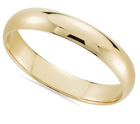 Palestinian weddings are typically cheerful, loud, plentiful, and last for several days in a row. This country has a rich and ancient culture, so it’s no wonder their wedding traditions are also old and respectful. From an engagement to a post-wedding family gathering – every aspect of a wedding is dictated by tradition and is wonderful to witness. If you’re going to a Palestinian wedding, be ready for mounds of food, loud ululating, folk dancing and singing, and elaborate henna tattoos.
Palestinian weddings are typically cheerful, loud, plentiful, and last for several days in a row. This country has a rich and ancient culture, so it’s no wonder their wedding traditions are also old and respectful. From an engagement to a post-wedding family gathering – every aspect of a wedding is dictated by tradition and is wonderful to witness. If you’re going to a Palestinian wedding, be ready for mounds of food, loud ululating, folk dancing and singing, and elaborate henna tattoos.
Tulbeh – how Palestinians pop the question?
This wedding tradition is honored and followed even by the Palestinian diaspora. That’s how Palestinian men propose to their loved ones. The potential groom’s family (only the closest members) visits the bride’s family and formally asks for her hand in marriage. The question is popped by the eldest groom’s relative on his behalf and answered also by the eldest member of the bride’s family. During this meeting, tea, coffee, and traditional Middle Eastern sweets are served. Even today, everything is done according to the old tradition.
Sahra – party before the wedding
Celebration of the future wedding starts even before the official wedding day. Relatives and friends gather, eat, drink, dance, sing, and give their best wishes to the future couple. Some families of the bride and the groom celebrate separately, others have a large sahra party for both sides. This is sort of an equivalent for the Western bachelor and bachelorette parties but modest and appropriate.
Shaving of the groom
During the sahra, it is traditional to perform one of the most common and favored Palestinian wedding rituals – the shaving of the groom in front of all the guests. The groom is seated in front of everybody and one or several of his closest family members / friends lather his face and shave him. This ritual is supposed to show that the groom is clean, well-groomed, and ready to meet his bride.
Henna night for the bride
While the groom is ceremonially shaved, the bride gets her henna tattoos. She gathers her close female relatives and friends and they have a henna night. Sometimes, it happens during the sahra, or on a separate evening. The women celebrate, talk, sing, eat, and decorate each other’s hands and feet with henna drawings. The bride’s hands and feet are usually painted by a pro henna artist or someone with a great experience. They use henna paste, and these tattoos symbolize the connection of a person with the earth. These henna tattoos can be really intricate, works of art.
Huge feast with plenty of food
Every Palestinian wedding turns into a large feast instead of a simple wedding reception. The amounts of food are always huge, and the dishes are typically nourishing – meat, bread, foods cooked on the open fire, roasts, a variety of sweets, etc. One of the most popular dishes is called “mansaf”. It consists of chunks of lamb meat on top of cooked rice on top of pieces of bread. Yogurt is served to accompany such heavy foods. Another typical dish is called “qidra” – a pot of rice, lamb, and chickpeas, heavily spiced. Just imagine the aromas at a Palestinian wedding dinner!
Traditional embroidered wedding attire
A lot of Palestinian brides – inside the country and in the diaspora – prefer to wear a traditional thobe embellished with Palestinian national embroidery instead of a Western-style white wedding dress. The craft of embroidering is very old and developed in Palestine, so practically every woman has at least one traditional embroidered gown in her wardrobe. And Palestinian embroidered wedding dresses are world-famous. Some brides start preparing their wedding attire years in advance.
Zaffe and dabke wedding activities
Other very typical and common Palestinian wedding traditions include a wedding zaffe or wedding procession and a dabke (folk wedding dance). You can see a zaffe on the wedding day when a large procession of people escort the groom to his bride’s house and then the couple to the church or another place where their wedding ceremony is held. This procession is loud and cheerful, with songs, ululating sounds (called “zaghrouta”) made by women, and cheers.
During the wedding celebration, wedding guests perform a traditional wedding dance called “dabke”. It’s a site to behold! People make a circle and dance in a certain way that depends on where the family originates from, so there are many variations of this folk dance.
Another dance is called “sahjih”. It’s performed by men and is a spectacular view. This dance is accompanied by the singing of all of the guests.
Frad dinner after the wedding
One week after the wedding, the bride traditionally visits her family for a dinner called “frad”. Usually, the couple comes to the bride’s parents’ home together with the groom’s family, and a large party is held where the two families continue to bond.

